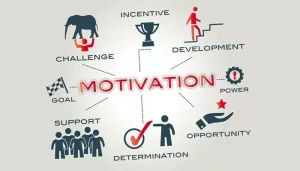The modern workplace is a whirlwind of change. Remote workforces, digital collaboration tools, and an ever-evolving skillset landscape demand a new approach to team building. Gone are the days of siloed departments and rigid hierarchies. Today’s high-performing teams are agile, adaptable, and driven by a shared sense of purpose. But how do we cultivate this winning culture?
The Trust Factor: Foundation of Success

At the heart of any high-performing team lies trust. Team members need to feel comfortable sharing ideas, offering constructive criticism, and admitting mistakes without fear of retribution. Leaders who prioritize transparency, open communication, and psychological safety create an environment where vulnerability becomes a strength, not a weakness. This goes beyond simply creating a space where people feel safe to speak their minds. It’s about actively fostering a culture of empathy and mutual respect, where team members are genuinely interested in each other’s well-being and success.
Building Bridges, Not Walls: Effective Communication
Communication is the lifeblood of any team. In today’s hybrid work environments, fostering clear and consistent communication across various channels is crucial. This goes beyond just meetings and emails. Regular check-ins, knowledge-sharing platforms, and collaborative tools can bridge geographical divides and ensure everyone is on the same page. But effective communication is a two-way street. Leaders need to be active listeners who encourage open dialogue and value diverse perspectives.
Empowering Individuals, Strengthening the Collective
High-performing teams are not simply a collection of interchangeable cogs in a machine. They are made up of diverse individuals with unique strengths and perspectives. Leaders who empower team members with ownership, decision-making authority, and opportunities for growth unlock their full potential. This doesn’t mean letting go of the reins entirely. It’s about striking a balance between providing clear direction and setting goals while giving team members the autonomy and trust to navigate the path to achieving them.
Learning Never Stops: A Culture of Continuous Improvement
The modern workplace is in a constant state of flux. To stay ahead of the curve, fostering a culture of continuous learning is essential. This can involve providing access to training programs, encouraging cross-team collaboration, and celebrating innovation and experimentation. Leaders who champion learning create an environment where mistakes are seen as opportunities for growth, not failures.
The Power of Recognition: Fueling Motivation
A simple “thank you” can go a long way. High-performing teams thrive on recognition and appreciation. But recognition shouldn’t be a one-size-fits-all approach. Understanding what motivates each team member and tailoring recognition efforts accordingly is key. Public praise might energize one person, while another might prefer a quiet, personalized note expressing gratitude for their efforts. Leaders who take the time to understand individual preferences can create a more meaningful recognition experience.
Building a high-performing team culture is not a one-time fix; it’s an ongoing journey.
By prioritizing trust, communication, empowerment, learning, and recognition, leaders can create a work environment where individuals flourish and teams achieve remarkable things together. However, this foundation needs to be constantly nurtured and adapted. Regular team-building activities, staycations for remote teams, and open forums to discuss challenges and brainstorm solutions can all help keep the team spirit strong.










